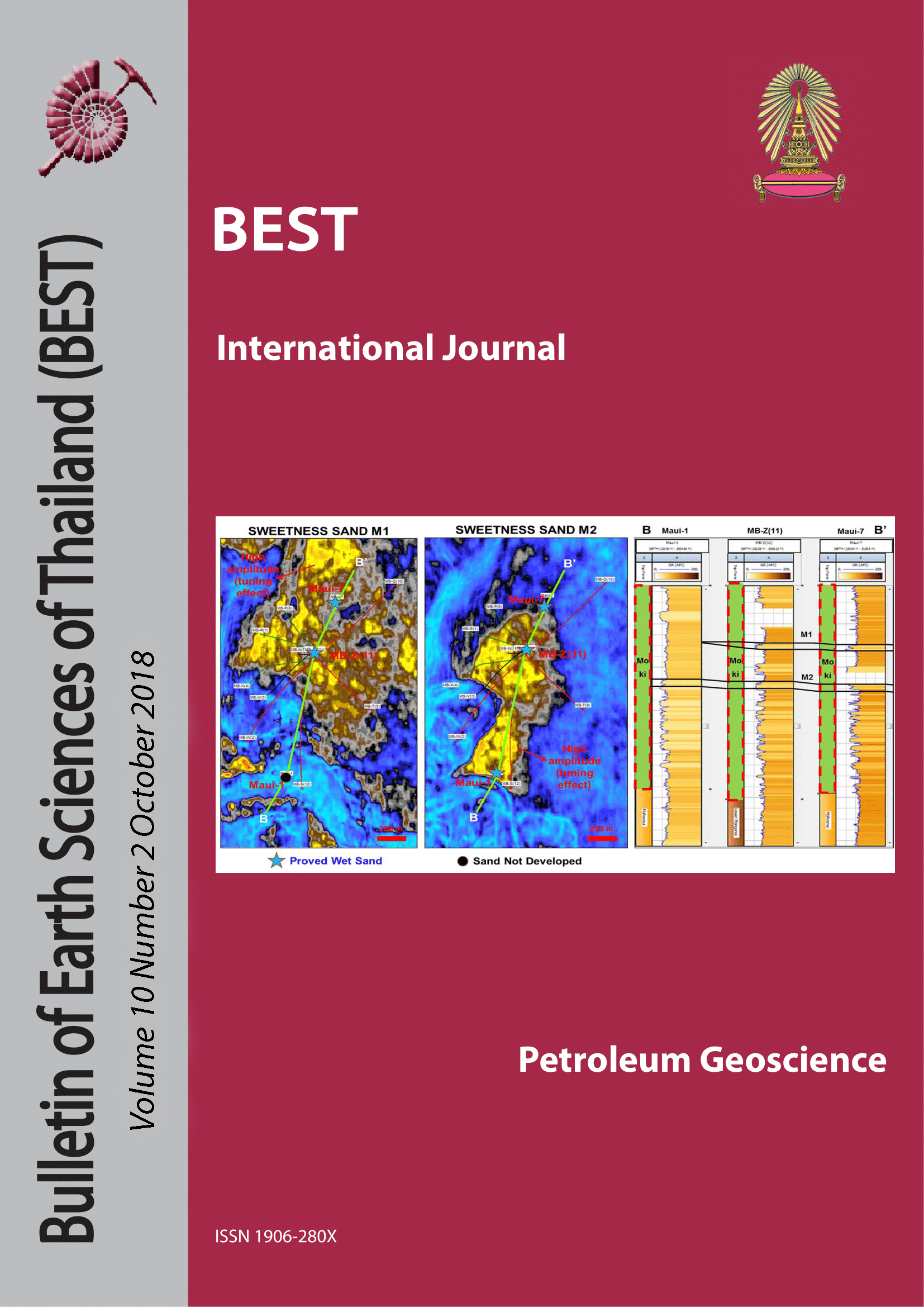Identifying shallow gas zones by using seismic attributes, offshore Vietnam
Main Article Content
Abstract
The overall aim of this study is to predict shallow gas hazards by using a series of seismic attributes. Shallow gas zones are a major concern in offshore drilling because of their potential to quickly cause kicks or blowouts. Combining of seismic data analysis and well log analysis is applied to identify the location and distribution of shallow gas layers in the study area. The research provides an opportunity to observe seismic data before and after a large influx of gas due to a blowout well. The study is unique because data without gas effects can be compared to data affected by gas after a blow-out. The study area is located in Nam Con Son Basin, offshore Vietnam. Direct hydrocarbon indicators (DHI) are the measurements by which presence and absence of a hydrocarbon accumulation can be predicted. The changes of reflectors between 2D seismic data (pre-blowout well) and 3D seismic data (post-blowout well) are analyzed by using seismic attributes. The characteristics of shallow gas can be defined such as high amplitudes, push-down effects and low frequency shadows. This study also concentrated on shallow gas layers in terms of the best combination of seismic amplitude attributes and frequency attributes. A series of attributes were run by looking for the identification of shallow gas hazards from Pliocene to Recent in the whole study area.
Article Details

This work is licensed under a Creative Commons Attribution-NonCommercial-NoDerivatives 4.0 International License.
Copyright © 2008 Department of Geology, Faculty of Science, Chulalongkorn University. Parts of an article can be photocopied or reproduced without prior written permission from the author(s), but due acknowledgments should be stated or cited accordingly.
References
Davis, A. M., (1992), Shallow gas: an overview. Continental Shelf Research 12(10): 1077-1079.
Floodgate, G. D., & Judd, A. G., (1992), The origins of shallow gas. Continental Shelf Research 12(10): 1145-1156.
Haavik, K. E., & Landrø, M., (2014), Iceberg ploughmarks illuminated by shallow gas in the central North Sea. Quaternary Science Reviews 103: 34-50.
Hutchinson, B. D., & Marfurt, K., (2016), Application and Limitations of Seismic Attributes on 2D Reconnaissance Surveys (University of Oklahoma).
Li, L., Ran, X., Tao, C., Wan, Z., & Zhan, S., (2013), The Application of Semi-supervised Geobody Detection Technique using Multiple Seismic Attributes in Petroleum Exploration. Search and Discovery Article #41165.
Mangal, S., Hansa, G. L., Savanur, S. R., Rao, P. H., & Painuly, S. P., (2004), Identification of Shallow Gas Prospects from DHI and Inversion Studies of 2D Seismic Data, Kosamba Oil field, South Cambay Basin, India–A Case Study.
O'Brien, J., (2004), Seismic amplitudes from low gas saturation sands. The Leading Edge 23(12): 1236-1243.
Taner, M. T., (2001), Seismic attributes. CSEG recorder 26(7): 49-56.
Tuan, N. Q., & Tri, T. V., (2016), Seismic interpretation of the Nam Con Son Basin and its implication for the tectonic evolution. Indonesian Journal on Geoscience 3(2): 127-137.
VPI-labs, (1993), The report of the well W1.
VPI-labs, (1994), The report of the well W2.


